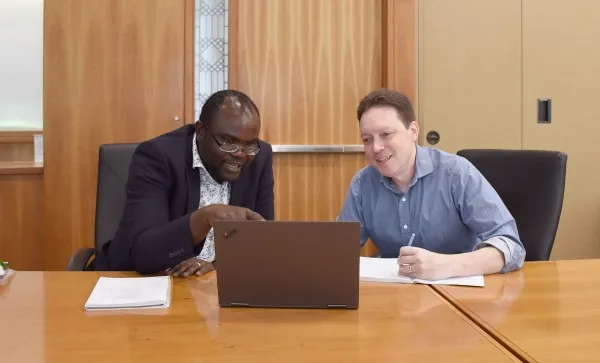
Groundbreaking Discovery: African Medicinal Plant Paves the Way for an HIV Cure
2024-11-19
Author: Wei Ling
Groundbreaking Discovery: African Medicinal Plant Paves the Way for an HIV Cure
In a remarkable collaboration that could change the landscape of HIV treatment, researchers from The Wistar Institute in Philadelphia and the University of Buea in Cameroon have identified the potent mechanisms of Croton oligandrus, a traditional African medicinal plant long utilized for its healing properties. This tree, indigenous to Cameroon, has been traditionally employed to combat various ailments, including cancer, diabetes, and now, intriguingly, HIV.
The findings, published in the Journal of Experimental Pharmacology, detail how extracts and compounds derived from Croton oligandrus can potentially reactivate latent HIV. This research is pivotal as it not only contributes to the fight against HIV but also underscores the significance of traditional knowledge in modern medicine.
Led by Dr. Fidele Ntie-Kang from the University of Buea and Dr. Ian Tietjen from The Wistar Institute, the collaborative effort has been fruitful since its inception in 2021, showcasing the effectiveness of combining traditional practices with contemporary scientific methods. The study involved lead author Chantal Emade Nkwelle, who benefitted from a five-month research residency at Wistar, gaining invaluable experience and techniques to bring back to her home institution.
Luis Montaner, a key figure in the HIV Cure and Viral Diseases Center at Wistar, emphasized the importance of such global partnerships, stating, "An effective cure will need to reach people around the world; by leveraging traditional African ethnomedicine, we're making progress towards a cure with accessibility in mind."
Despite advancements in managing HIV through antiretroviral therapies (ART), a complete cure remains elusive. The virus can stay dormant in the body for years, posing a significant challenge to treatment. The collaboration aims to develop strategies specifically suited for Sub-Saharan Africa, where the need for effective HIV cure methods is urgent.
Dr. Ntie-Kang noted the long-standing reliance on plant-based medicinal practices in Cameroon, where traditional healers have addressed a wide range of health issues for centuries. He highlighted that their partnership with Wistar extends beyond just scientific discovery; it is also about fostering human capacity development.
The research team investigated whether Croton oligandrus contains latency-reversing agents (LRAs)—substances that can wake dormant HIV so that it can be targeted for elimination. Earlier studies on other ethnomedicinal plants hinted at the potential of such compounds, and this research confirmed that certain extracts from Croton oligandrus exhibited significant activity in reversing HIV latency in laboratory tests.
Dr. Tietjen expressed optimism about the plant's potential role in HIV cure research, noting that some isolated compounds showed enhanced effectiveness when combined with existing LRA agents. This synergy could represent a breakthrough in overcoming the "kick and kill" strategy required to tackle the viral reservoirs that pose a risk to long-term HIV patients.
The collaboration has also fostered educational opportunities, as evidenced by Ms. Nkwelle’s residency at Wistar, made possible by a fellowship that enhances African scientists’ research capabilities. The project also involved various trainees and students, further embedding a culture of research-driven experience within the community.
As the scientific community continues to unlock the secrets of traditional medicines, the findings from this partnership illuminate a promising path forward in the quest for a cure that not only respects cultural practices but also offers hope to millions living with HIV. The future of HIV research may very well lie in the very roots of ancient healing traditions, making this collaboration one to watch closely.




 Brasil (PT)
Brasil (PT)
 Canada (EN)
Canada (EN)
 Chile (ES)
Chile (ES)
 España (ES)
España (ES)
 France (FR)
France (FR)
 Hong Kong (EN)
Hong Kong (EN)
 Italia (IT)
Italia (IT)
 日本 (JA)
日本 (JA)
 Magyarország (HU)
Magyarország (HU)
 Norge (NO)
Norge (NO)
 Polska (PL)
Polska (PL)
 Schweiz (DE)
Schweiz (DE)
 Singapore (EN)
Singapore (EN)
 Sverige (SV)
Sverige (SV)
 Suomi (FI)
Suomi (FI)
 Türkiye (TR)
Türkiye (TR)